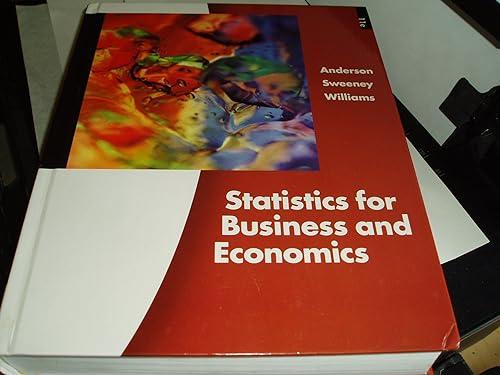Air pollution control specialists in southern California monitor the amount of ozone, carbon dioxide, and nitrogen dioxide
Question:
Air pollution control specialists in southern California monitor the amount of ozone, carbon dioxide, and nitrogen dioxide in the air on an hourly basis. The hourly time series data exhibit seasonality, with the levels of pollutants showing patterns that vary over the hours in the day. On July 15, 16, and 17, the following levels of nitrogen dioxide were observed for the 12 hours from 6:00 A. M. to 6:00 P. M.
July 15: 25 28 35 50 60 60 40 35 30 25 25 20 July 16: 28 30 35 48 60 65 50 40 35 25 20 20 July 17: 35 42 45 70 72 75 60 45 40 25 25 25
a. Construct a time series plot. What type of pattern exists in the data?
b. Use the following dummy variables to develop an estimated regression equation to account for the seasonal effects in the data.
Hour1 1 if the reading was made between 6:00 A.M. and 7:00 A.M.;
0 otherwise Hour2 1 if if the reading was made between 7:00 A.M. and 8:00 A.M.;
0 otherwise
.
.
.
Hour11 1 if the reading was made between 4:00 P.M. and 5:00 P.M., 0 otherwise.
Note that when the values of the 11 dummy variables are equal to 0, the observation corresponds to the 5:00 P.M. to 6:00 P.M. hour.
c. Using the estimated regression equation developed in part (a), compute estimates of the levels of nitrogen dioxide for July 18.
d. Let t 1 to refer to the observation in hour 1 on July 15; t 2 to refer to the observation in hour 2 of July 15; . . . and t 36 to refer to the observation in hour 12 of July 17.
Using the dummy variables defined in part
(b) and t, develop an estimated regression equation to account for seasonal effects and any linear trend in the time series. Based upon the seasonal effects in the data and linear trend, compute estimates of the levels of nitrogen dioxide for July 18.
Step by Step Answer:

Statistics For Business And Economics
ISBN: 9780324783247
11th Edition
Authors: Thomas A. Williams, Dennis J. Sweeney, David R. Anderson




